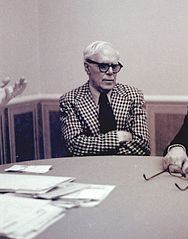Divisibility rules are shortcuts used to find if a number can be divided by a required divisor, without performing the actual division process.
These rules usually consist of a set of operations which are performed on the required number in order to verify its divisibility with the required divisor. In this article, we are going to look at divisibility rule of 7 with examples.
Index
Divisibility Rules of 7 Explained
Divisibility rules were first introduced in a popular science magazine Scientific American, in the mathematical games column, by an American popular mathematics and popular science writer Martin Gardner.

There are two divisibility rules of 7. Let’s take a look at both of them with simple steps to check if a number satisfies the divisibility rule of 7.
Rule 1
The steps to check the divisibility of a number with 7 using rule 1:
- Separate the one’s place digit from the given number.
- Double the one’s place digit.
- Subtract the remaining number after removing the one’s place digit with the number obtained in Step 2.
- Repeat Steps 1 – 3 until the resulting number at the end of the process is a single digit.
- If the modulus of the obtained number is either 0 or 7, then the given number is divisible by 7.
Rule 2
The steps to check the divisibility of a number by 7 using rule 2:
- Divide the tens powers of all the places of the given number and find their remainder. Ex.1/7, 10/7, 100/7, 1000/7, etc.
The remainder of one’s place is 1, ten’s place is 3, hundredth’s place is 2, etc. - Multiply each digit of the given number with the remainders corresponding to their place obtained in Step 1.
- Add the products obtained in Step 2.
- If the resulting number is divisible by 7, then the given number is also divisible by 7.
Example Problems
Let’s work out some example problems to grasp the concept better. We are going solve two problems, one by using Rule 1 and another by using Rule 2.
Using Rule 1
Question. Find if 798 is divisible by 7 or not using Rule 1.
Solution. Following the steps as mentioned in Rule 1 to check the divisibility of a number by 7.
Step 1: Separating the ones place of the number.
798 = 79 + 8
Step 2: Doubling the one’s place digit.
8 * 2 = 16
Step 3: Subtracting the remaining number from Step 1 by the number obtained in Step 2.
79 – 16 = 63
Step 4: Repeating Steps 1 – 3 until the number obtained at the end of the process has a single digit.
63 = 6 + 3
3 * 2 = 6
6 – 6 = 0
Step 5: If either 0 or 7 are the modulus of the number obtained at the end of the process, then the given number is divisible by 7.
0 is obtained at the end of the process, so 789 is divisible by 7.
Using Rule 2
Question. Find if 273 is divisible by 7 or not, using rule 2.
Solution. Following the steps as mentioned in Rule 2 to check the divisibility of a number by 7.
Step 1: Finding the remainders of the powers of ten of each place of the given number.
Ones place: 1/7 = 1
Tens place: 10/7 = 3
Hundredths place: 100/7 = 2
Step 2: Multiplying the remainders obtained in step 1 with the digits present in their respective places.
Ones place: 3 * 1 = 3
Tens place: 3 * 7 = 21
Hundredths place: 2 * 2 = 4
Step 3: Adding the products obtained in Step 2.
3 + 21 + 4 = 28
Step 4: 28 is divisible by 7, so 273 is also divisible by 7.
FAQs
There are two divisibility rules of 7.
One of them states that, if the difference between double of the ones place digit of the given number and the remaining number excluding the ones place digit is a multiple of 7, then the original number is divisible by 7.
The other rule states that, the products obtained by multiplying each digit of the given number by their respective remainders, obtained by dividing their respective powers of ten by 7, when added if their sum a multiple of 7, then the original number is divisible by 7.
Divisibility rules can be considered as a shortcut to find if a particular divisor can perfectly divide the given number.
Divisibility rules were first introduced in a popular science magazine Scientific American, in the mathematical games column, by an American popular mathematics and popular science writer Martin Gardner.
Know More Divisibility Rules:
